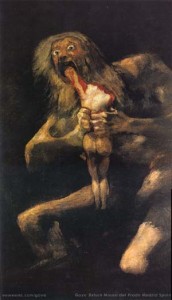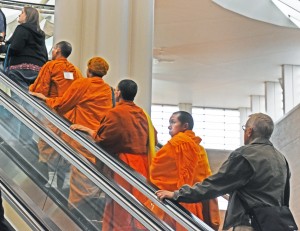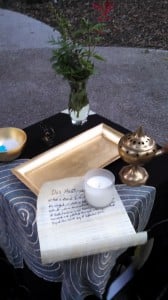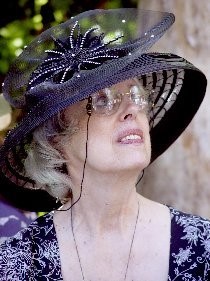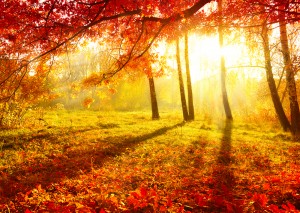
Photo courtesy of shutterstock.
I grew up in a household that practiced portions of two religions: Judaism and Christianity. My mother was Christian but converted to Judaism; my father is Jewish by birth. But, just because my immediate family nominally had a single religious identity, my extended family remained multi-faith. I remember fondly lighting the menorah and the tree at my maternal grandmother’s house during years where Christmas and Hanukkah overlapped, for example. My choice to live as a Pagan and a polytheist as an adult further complexifies my family’s religious landscape as does, for that matter, my wife’s (and in-laws’) Catholicism.
My multi-faith family has an undeniable impact on my religious life today. Chiefly, I think it prepared me well for the intricacies of interfaith involvement; nearly every extended family get together requires at least some organization within and around religious custom and holidays, especially during my childhood when my family kept a kosher household. But, in less obvious ways my spirituality is layered with pieces of a Pagan, Jewish, and–to a lesser extent–Christian identity that I feel most notably at the Autumnal Equinox.
While the Jewish calendar is lunar and, therefore, doesn’t align itself with the solar timing of the Autumnal Equinox, the High Holidays of Judaism, Rosh Hashanah and Yom Kippur, often find themselves placed near enough to this time of year that they often felt like the beginning of Fall when I was younger. These holidays were important to us as a family and they were the days we were most likely to attend synagogue. I suppose it’s not too surprising, then, that I would carry some of what these holidays meant (and continue to mean) to me as a Jew over into what this time of the year means to me as a Pagan.
Rosh Hashanah is the Jewish new year celebration. While I realize that the climate of the Middle East is vastly different than that of the US East Coast, I will always associate Autumn with new beginnings and not the end of summer–of freedom–as some may on this side of the globe. The beginning of that new year is celebrated by eating apples dipped in honey; apples to represent the year and honey to make it sweet. Yom Kippur, by contrast, is a more somber experience and considered by many to be the most sacred of days on the Jewish calendar. It is a day of atonement and reconciliation, both with other people and with God. It is a day of fasting and one during which many other activities are prohibited so that one’s attention is focused on the sacred and not the profane.
The Autumnal Equinox, Mabon if you prefer, has always felt like a blank slate — a holiday in search of a meaning. I know others celebrate it as a Pagan Thanksgiving with family and friends and a feast of the summer’s bounty, but as a solitary, I’ve never really had the opportunity to do so. And, as a person who revels in the dark half of the year, I have trouble celebrating the end of the Summer when I’m so very, very ready for the start of Winter.
Perhaps it’s no surprise that my Jewish heritage imprints itself on to this day. Today, I celebrate this day as a mix of blessings: a day to look forward toward things to come, but also a day on which to reflect on the things that have passed. Like the ten days between Rosh Hashanah and Yom Kippur, I use the time between Mabon and Samhain to try and chart my course for the next year, to try and recognize my moments of success and failure, and to seek to maximize the former while addressing the latter.
And thus, to those who are celebrating the bounties of the Summer, I hope that your cup overflows with joy and health and that your wealth sustains you through the coming months. And, to my fellow Jews (and Jewitches) I add l’shanah tovah — may you have a good year.






